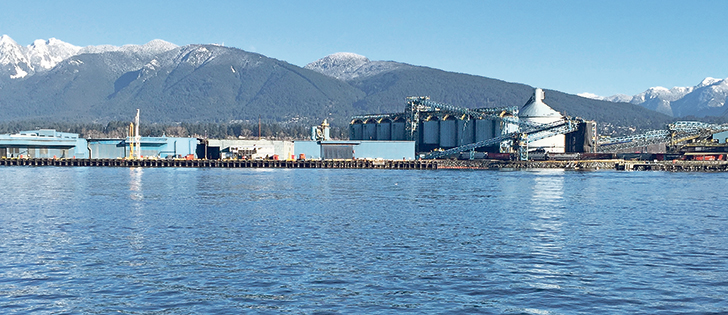SPECIAL REPORT | Grain industry investments are driving new expansions at the Port of Vancouver | BY BRIAN CROSS, SASKATOON NEWSROOM
Growing grain in Western Canada is a massive undertaking.
It requires knowledge, dedication, land, equipment and perhaps most importantly, a bold ability to invest huge amounts of capital on assets that will literally be buried in the dirt.
Getting Canadian grain to world markets can be a similarly daunting task.
Each year, billions of tiny seeds are grown, harvested, stored, transported, elevated, loaded and shipped hundreds of kilometres in rail cars.
When they arrive at the West Coast, the seeds are unloaded, processed, blended and packed onto ships that carry them around the world to their final destinations.
Read Also

Farming Smarter receives financial boost from Alberta government for potato research
Farming Smarter near Lethbridge got a boost to its research equipment, thanks to the Alberta government’s increase in funding for research associations.
The final few kilometres of a grain train’s run to the West Coast are often its most delicate and logistically challenging.
When a west-bound grain train nears its destination on British Columbia’s Lower Mainland, it must snake its way through a mass of humanity and traffic that gets more dense as the distance to Pacific Ocean tide water diminishes.
Further complicating the task is the complexity of Canada’s cross-country supply chain, which includes farmers, truckers, elevator staff, trains, export terminals, dock workers and ocean bound vessels, not to mention grain industry regulators, mountain ranges, and an often-unforgiving western Canadian climate.
Here are other stories in this special report:
G3 Canada excited about projects on the horizon
Review deems port privatization unnecessary
Doug Mills, senior account representative for trade development with the Port of Vancouver, likened the task of moving trucks, trains and ships in and out of one of Canada’s busiest ports to a logistical ballet.
Every element in the movement must work in perfect unison to keep the show on track.
“It’s not just a grain terminal’s loading rate onto ships or its unloading rate off a train” that determines its throughput efficiency, said Mills.
It’s a variety of factors, including traffic flows, access to rail cars and whether the right grain arrives on time for a ship delivery, he said.
“There’s a whole logistical dance that has to occur behind the scenes for that terminal to be able to maximize its efficiency. That, in part, is where we (the port authority) get involved in the discussion, is identifying where are the pinch points and where do we need to invest our resources next to ensure that we … are maximizing these assets.”
Grain has been at the centre of the port’s expansion over the past few years. Global demand for Canadian agri-products is growing and bulk shippers are placing more emphasis than ever on throughput efficiency.
In recent interviews with the Western Producer, established Canadian companies shared details of recent capital projects aimed at increasing throughput efficiency at the port.
Viterra has spent about $100 million on upgrades to its Pacific Terminal and it continues to invest in other west coast facilities, including the Cascadia Terminal.
Richardson recently spent $140 million on ugrades to its port facility in North Vancouver and G3 Global Grain Group, a relative newcomer to the industry, is expected to spend more than $1 billion building a new coast-to-coast grain handling network.
One of the key pieces in that network will be a new state-of-the art export terminal in North Vancouver, which will begin construction next month.
Together, Paterson GlobalFoods Inc., and Parrish & Heimbecker are also seeking approval to build a new export facility on the Fraser River. The two companies are currently under permit-review to perform significant loading gallery upgrades at Alliance Grain Terminal, a facility they jointly own on the South Shore of the Inner Harbour.
In fact, if all the proposed and completed grain projects within the port’s jurisdiction are taken into consideration, close to 15 million tonnes of new grain export capacity will have been added by bulk shippers over a period spanning less than a decade.
This does not include proposed container terminal expansions at Centerm and Columbia Containers on Vancouver’s Inner Harbour, or projects rumoured to be under consideration at Fibreco and Vancouver Wharves.
“I would say that the level of (grain industry) investment has been significant already at the West Coast,” said Viterra executive Kyle Jeworksi. “Almost every facility that’s out there has had what I would describe as major capital projects, either completed or underway.”
[ngg_images source=”galleries” container_ids=”36″ display_type=”photocrati-nextgen_pro_blog_gallery” override_image_settings=”0″ image_quality=”100″ image_crop=”0″ image_watermark=”0″ image_display_size=”800″ image_max_height=”0″ spacing=”5″ border_size=”0″ border_color=”#FFFFFF” display_captions=”0″ caption_location=”below” ngg_triggers_display=”always” captions_enabled=”0″ captions_display_sharing=”1″ captions_display_title=”1″ captions_display_description=”1″ captions_animation=”slideup” order_by=”imagedate” order_direction=”DESC” returns=”included” maximum_entity_count=”500″]


















